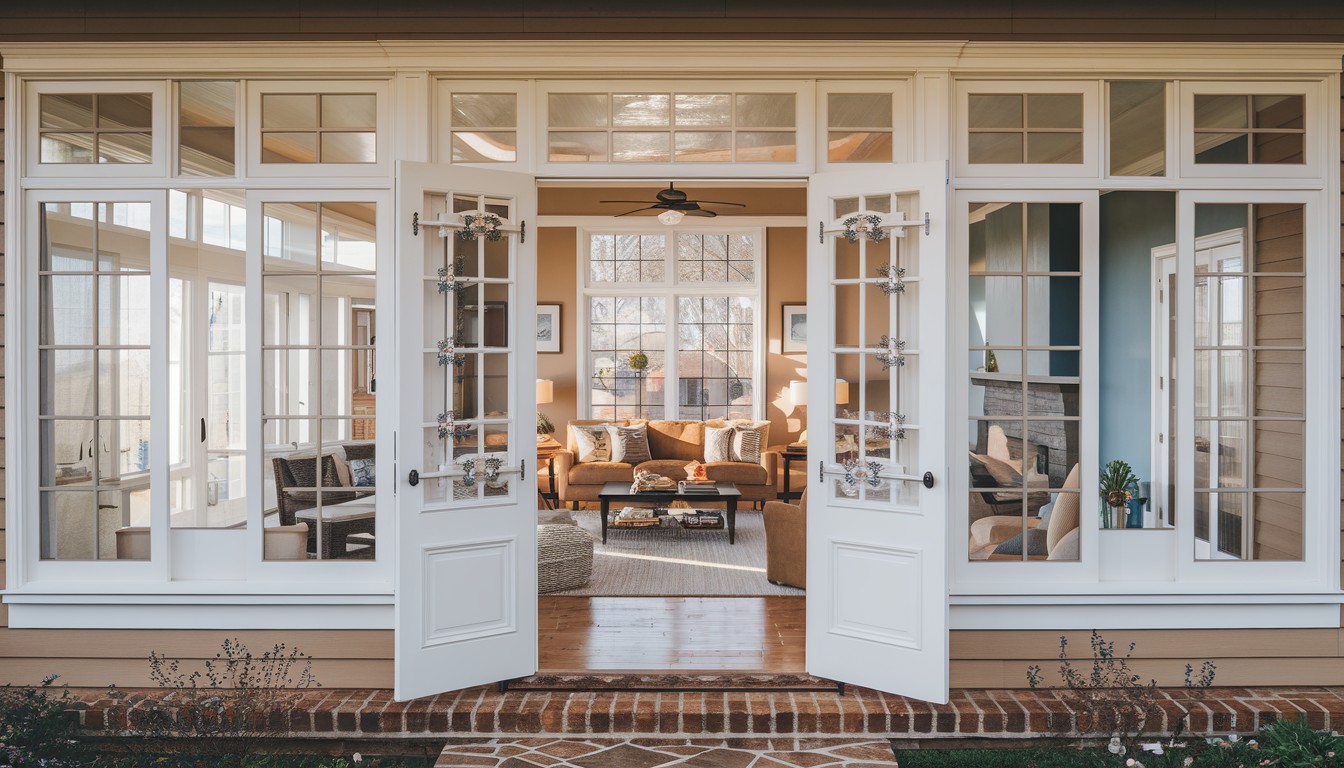Zero interest home improvement loans offer a great opportunity for homeowners to enhance their property's value without the burden of interest payments. These loans are designed to help property owners fund necessary improvements, making it easier to maintain and increase the value of their homes. For those living in North and South Carolina, this is particularly relevant, as the housing market in these areas is continuously evolving. By taking advantage of zero interest loans, homeowners can make smart upgrades that not only improve their living space but also boost their property's market value.
Understanding Zero Interest Home Improvement Loans
Zero interest home improvement loans are loan options that allow homeowners to borrow money for renovations without paying any interest over the loan term. Here's how they work:
- Loan Amount: Borrowers can access funds to cover the cost of home improvements.
- Repayment: You pay back the original amount over time, without any interest charges.
- Purpose: Funds are typically used for renovations that enhance the home's value, such as kitchen remodels, bathroom upgrades, or energy-efficient installations.
Eligibility for these loans often depends on several factors:
- Credit Score: A good credit score can improve chances of approval.
- Income Level: Lenders may require proof of steady income.
- Property Value: The current value of the home may be assessed.
Compared to traditional loans, zero interest loans offer significant benefits:
- Cost Savings: No interest means lower overall repayment amounts.
- Budget-Friendly: Easier to manage monthly payments without interest accumulation.
- Increased Value: Enables homeowners to invest in projects that can increase home value.
For more information, check out this comprehensive article on home improvement loans.
Home Improvement Financing Options
When it comes to enhancing your home's value, having the right financing option is important. There are several methods available to homeowners, each with its own set of benefits. Here's a look at some popular home improvement financing options:
- Zero Interest Home Improvement Loans: These loans allow you to borrow money without paying any interest, making them an attractive option for homeowners looking to minimize costs.
- Home Equity Loans: These loans use your home as collateral, often offering lower interest rates than personal loans.
- Personal Loans: Unsecured loans that don't require home equity. They can be easier to obtain, especially through options like an easyfinancial personal loan, though they may come with higher interest rates.
- Credit Cards: Useful for smaller projects, but interest rates can be high if the balance isn't paid off quickly.
- Government Programs: Various federal and state programs offer financial assistance for home improvements.
Comparing zero interest loans to other methods, they offer significant savings on interest payments.
How to Finance Home Improvements Effectively
Financing home improvements requires good planning and thought of your financial situation. Follow these steps to ensure you make the best decision:
- Assess Your Finances: Review your current financial situation, including income, expenses, and credit score. This will help determine how much you can afford to borrow.
- Set a Budget: Estimate the total cost of your project and create a budget that includes all potential expenses.
- Research Financing Options: Explore different financing options, comparing interest rates, terms, and eligibility requirements.
- Plan Ahead: Consider the timeline of your project and how quickly you need funds. Some financing options may take longer to process than others.
- Consult a Professional: If you're unsure about the best financing method, consult with a financial advisor or home improvement expert.
Evaluating your personal financial situation is crucial before choosing a financing method. Proper planning and budgeting can prevent overspending and ensure that your home improvement project adds maximum value to your property.
Best Way to Finance Home Improvements
When it comes to financing home improvements, selecting the right option can make a big difference. Here are some of the best ways to finance your project based on different situations and needs:
- Zero Interest Home Improvement Loans: These loans are ideal for homeowners who qualify, as they allow you to pay back the borrowed amount without any interest. This option can save you a lot of money compared to traditional loans.
- Home Equity Loans: If you have built up equity in your home, you can borrow against it. This option often offers lower interest rates compared to personal loans.
- Personal Loans: These are a good choice if you don't have enough equity in your home or if you need funds quickly. However, they typically come with higher interest rates.
- Credit Cards: For smaller projects, using a credit card with a low-interest rate or a promotional zero interest period can be convenient. Be mindful of the repayment terms to avoid high interest charges.
Each method has its pros and cons:
- Zero Interest Loans: Pros include no interest costs, but they may have strict eligibility requirements.
- Home Equity Loans: Pros include lower interest rates; cons include risking your home if you default.
- Personal Loans: Pros include quick access to funds; cons include higher interest rates.
- Credit Cards: Pros include ease of use; cons include potential for high interest if not paid off quickly.
To maximize your property's value, it's important to choose the right improvements. According to research, kitchen and bathroom upgrades, as well as adding energy-efficient features, can significantly enhance your home's value.
DIY Home Improvement Projects
If you're looking to reduce the need for financing, DIY home improvement projects can be a great option. Not only can they save you money, but they also offer a feeling of achievement. Here are some practical ideas for beginners:
- Painting: A fresh coat of paint can transform any room. It's a cost-effective way to update your home’s look.
- Landscaping: Simple tasks like planting flowers or trimming bushes can improve your home's curb appeal.
- Minor Repairs: Fixing leaky faucets or replacing door handles are small projects that can make a big difference.
For more inspiration, check out these home improvement ideas that are perfect for beginners. By tackling some projects yourself, you can allocate your budget to larger improvements that may require professional help.
In summary, whether you choose to finance your projects or take the DIY route, planning and budgeting are key to maximizing your property value. Make informed decisions to ensure your home improvements bring the best return on investment.
Best Way to Borrow Money for Home Improvements
When it comes to financing home improvements, borrowing money can be a good choice. Understanding the different borrowing choices available can help you make the best decision for your situation. Here are some common borrowing options:
- Home Equity Loans: These loans allow you to borrow against the equity in your home. They often come with fixed interest rates and set repayment terms.
- Home Equity Lines of Credit (HELOC): Similar to home equity loans, but with more flexibility. You can draw funds as needed, and interest rates are usually variable.
- Personal Loans: Unsecured loans that don't require home equity. They can be easier to obtain but may come with higher interest rates.
- Credit Cards: Useful for smaller projects, especially if you can pay off the balance quickly to avoid high interest.
Each option has its pros and cons:
- Home Equity Loans/HELOC: Lower interest rates but require significant home equity.
- Personal Loans: Easier approval but potentially higher rates.
- Credit Cards: Convenient but can lead to high debt if not managed carefully.
When selecting the best borrowing option, consider your financial situation, the size of your project, and your repayment ability. This careful evaluation ensures that your home improvement project enhances your property value without undue financial strain.
Why Financing for Home Improvement Matters
Choosing the right financing option is very important for maximizing your property's value. Well-planned home improvements can offer significant long-term financial benefits:
- Increased Property Value: Strategic improvements can boost your home's market value, making it more appealing to potential buyers.
- Energy Efficiency: Upgrades like better insulation or solar panels can reduce energy costs, providing savings over time.
- Enhanced Living Experience: Improvements can make your home more comfortable and enjoyable, enhancing your quality of life.
By selecting the right financing option, you can make informed decisions that align with your financial goals and property needs. Remember, certain home improvements tend to add more value than others, so prioritize those that offer the best return on investment.
Ultimately, financing for home improvement is not just about borrowing money; it's about making smart choices that will benefit you and your property in the long run. For more insights on financing options, you can explore how different strategies [offer both quality and value](https://tomadamswc.com/how-to-finance-a-home-improvement-project-options-and-benefits) in the field of home improvement.










